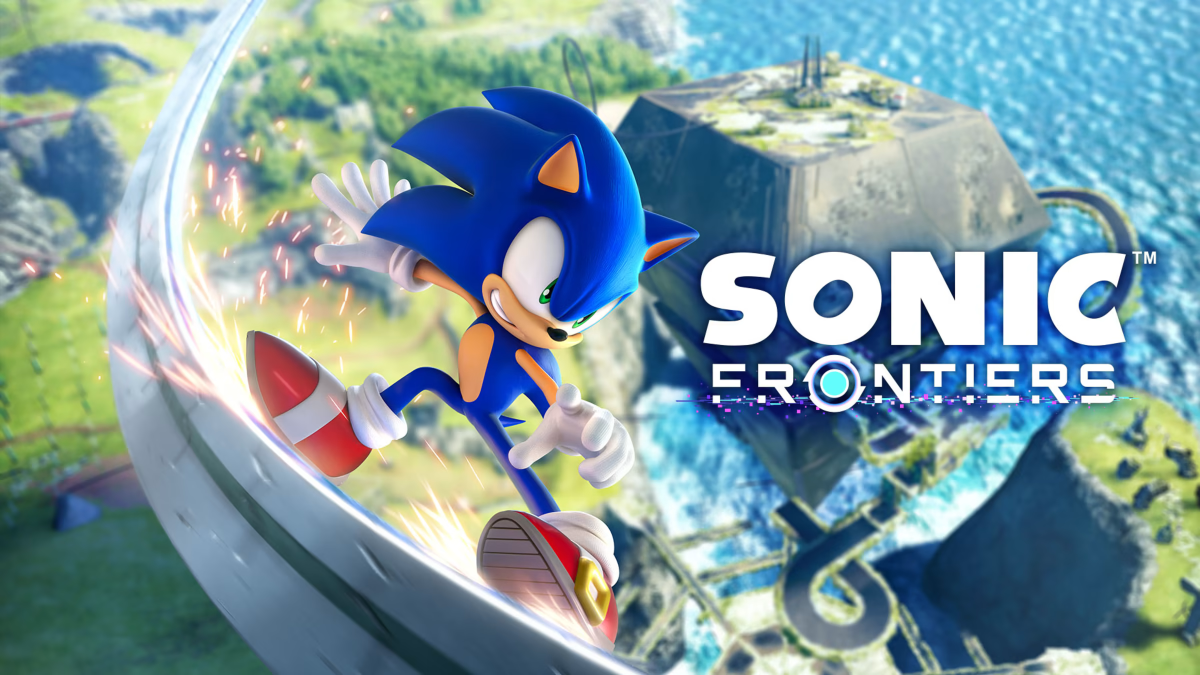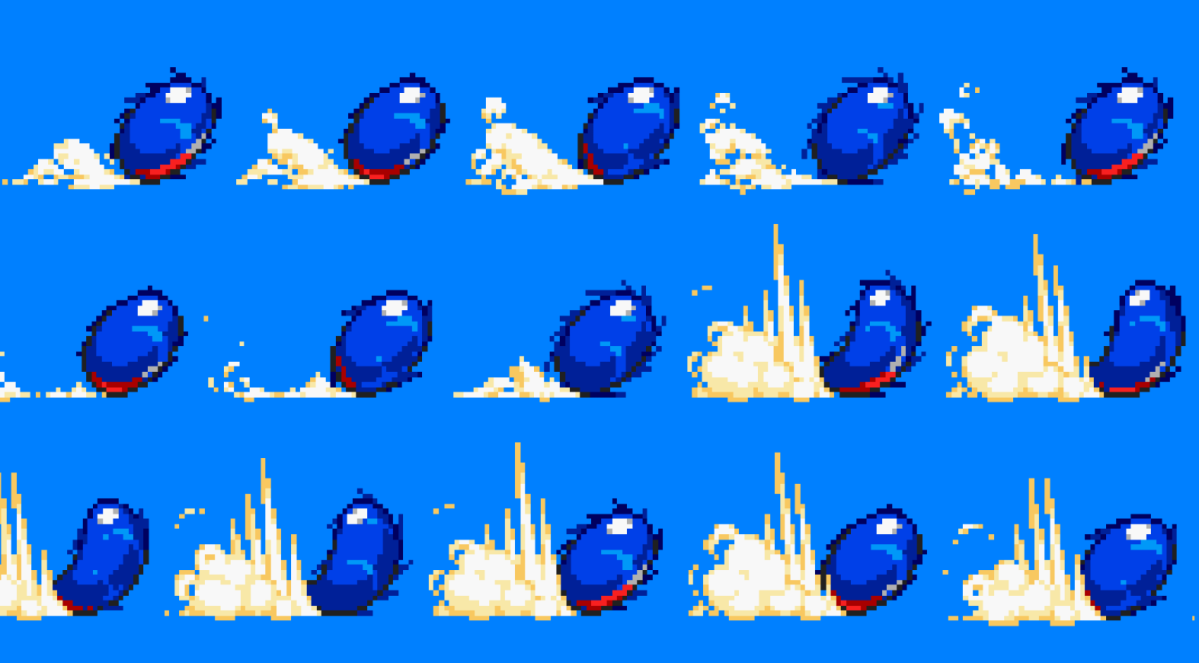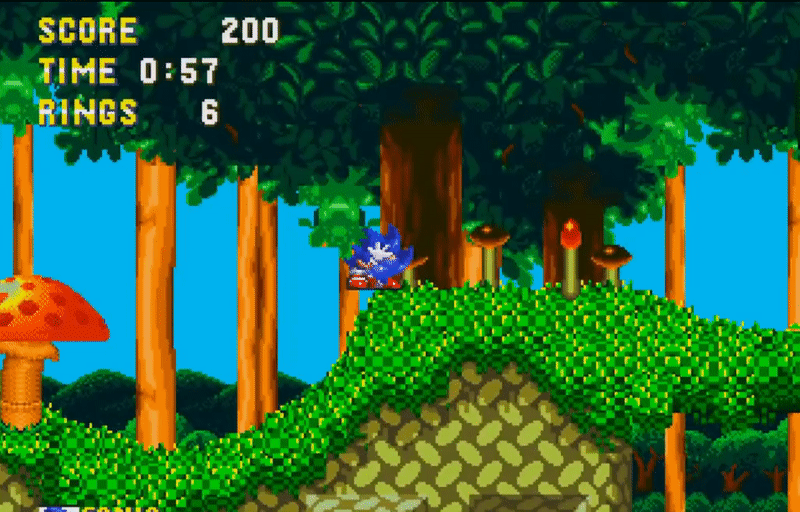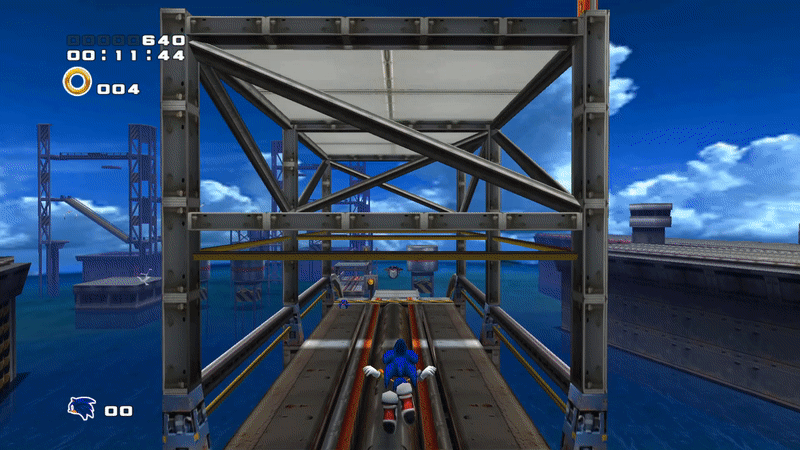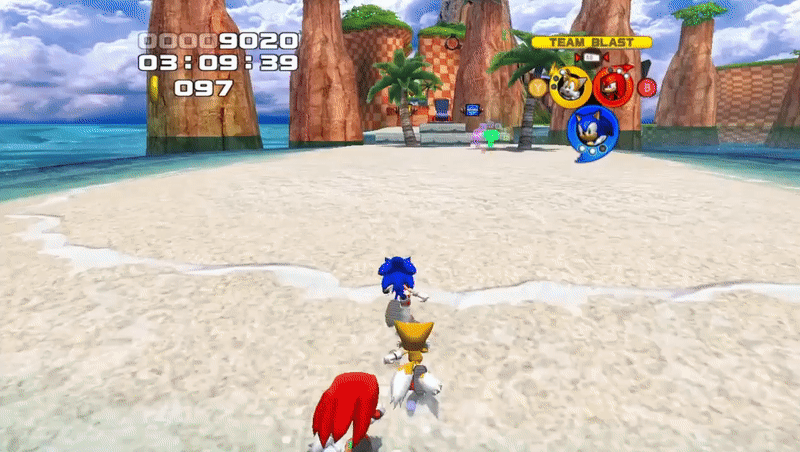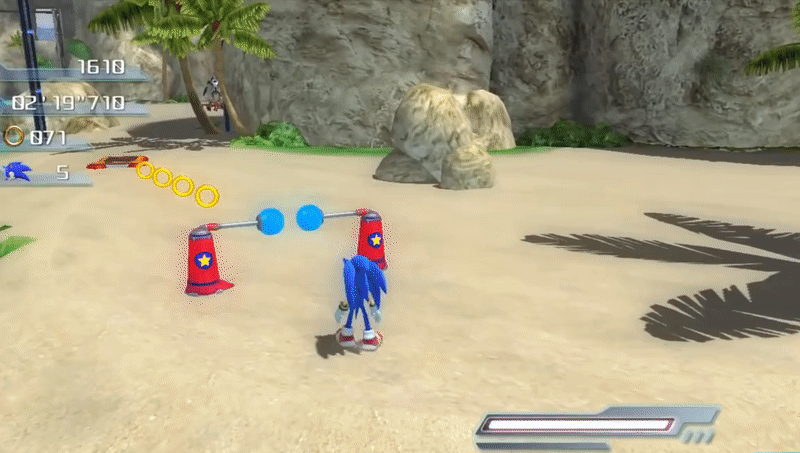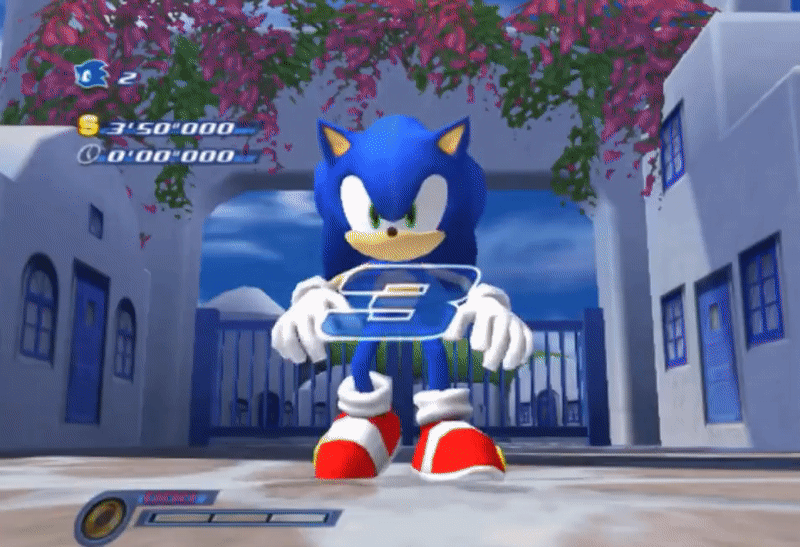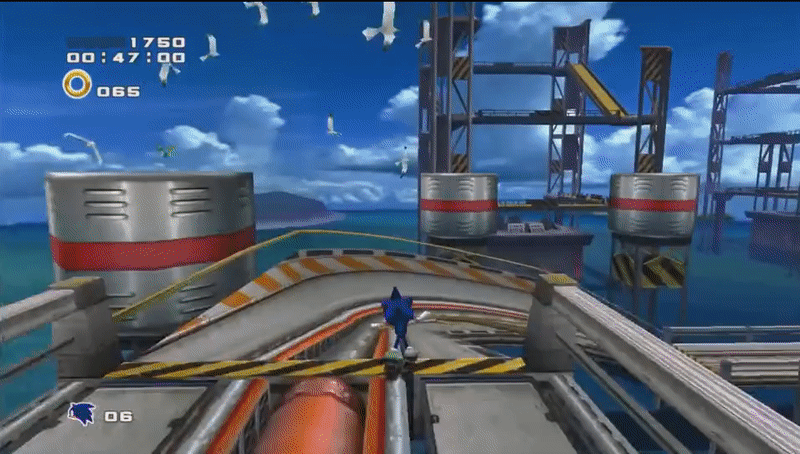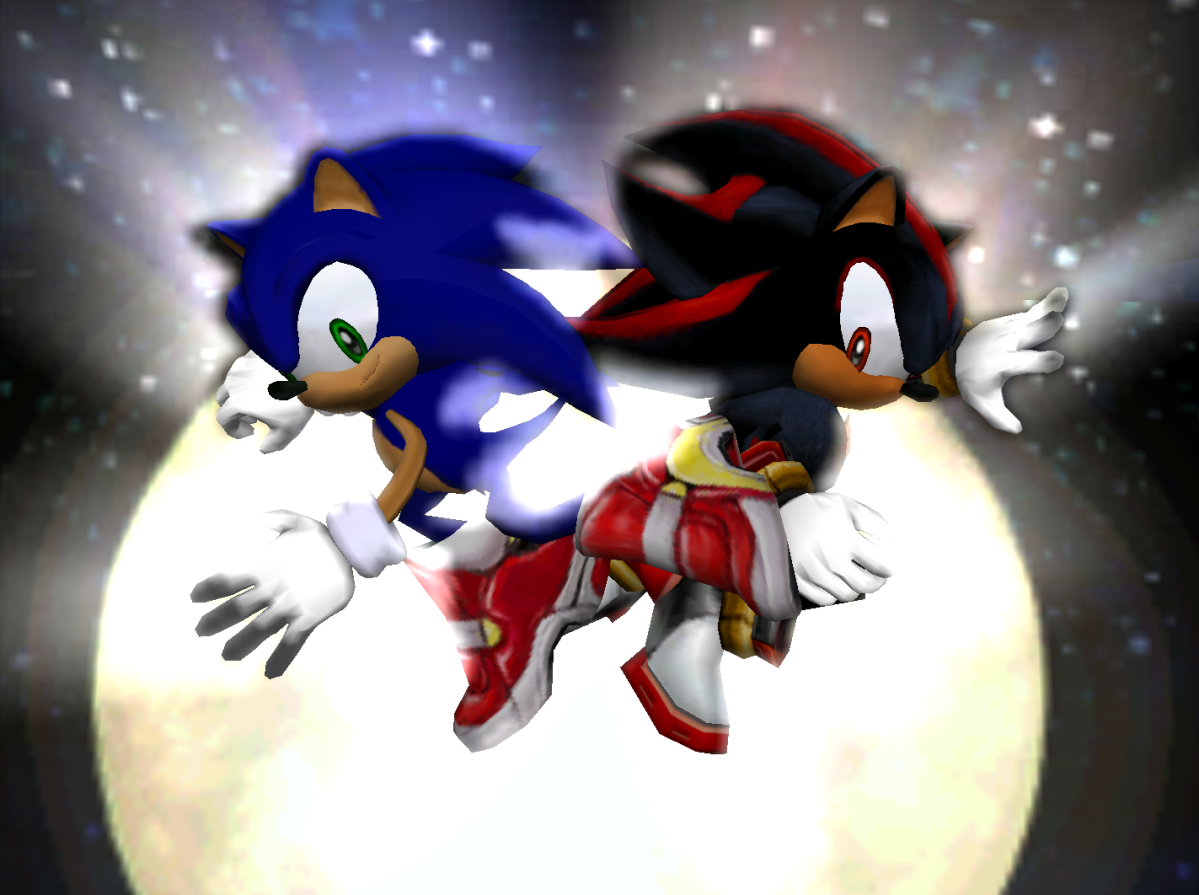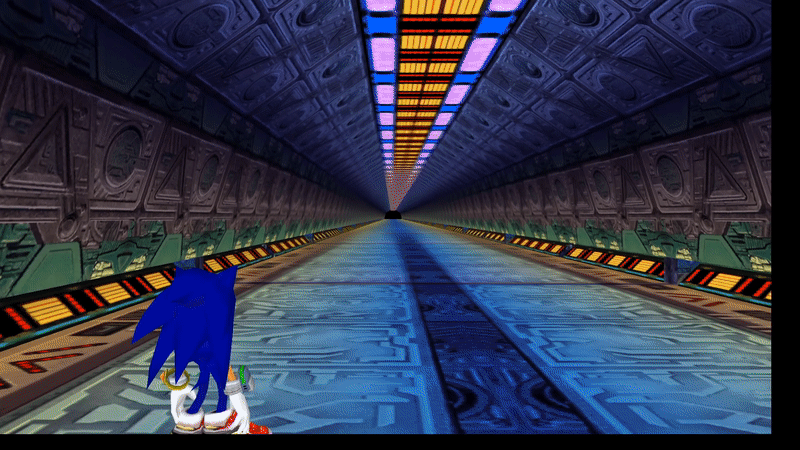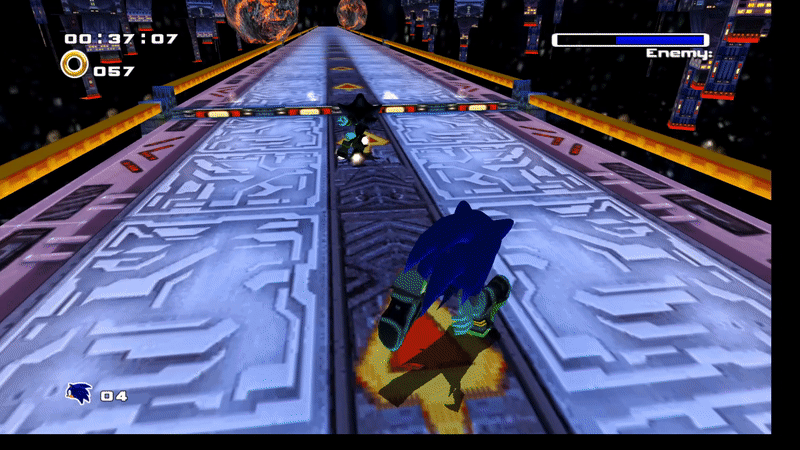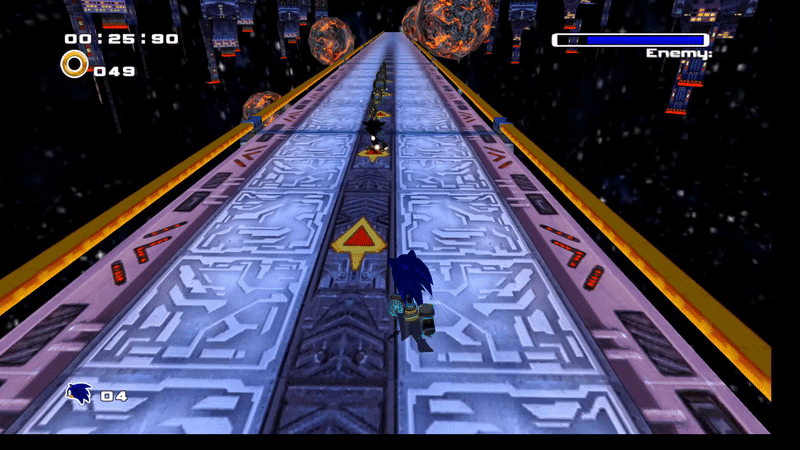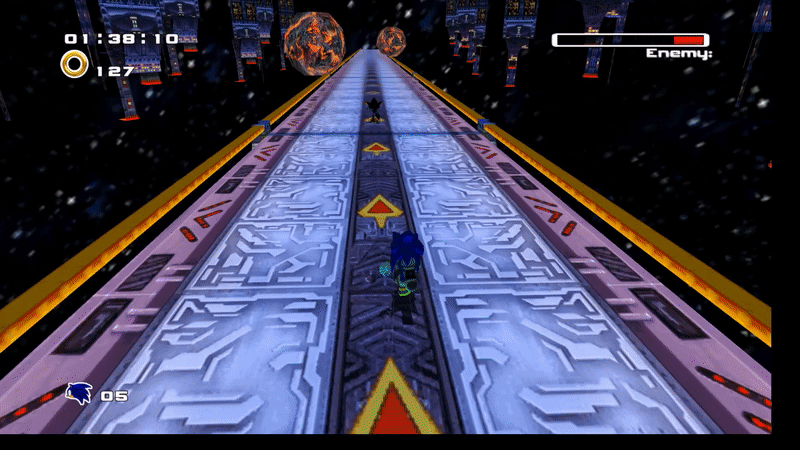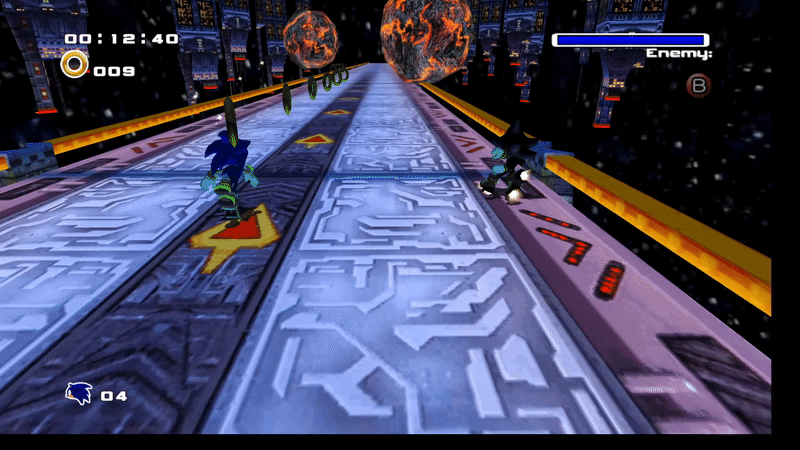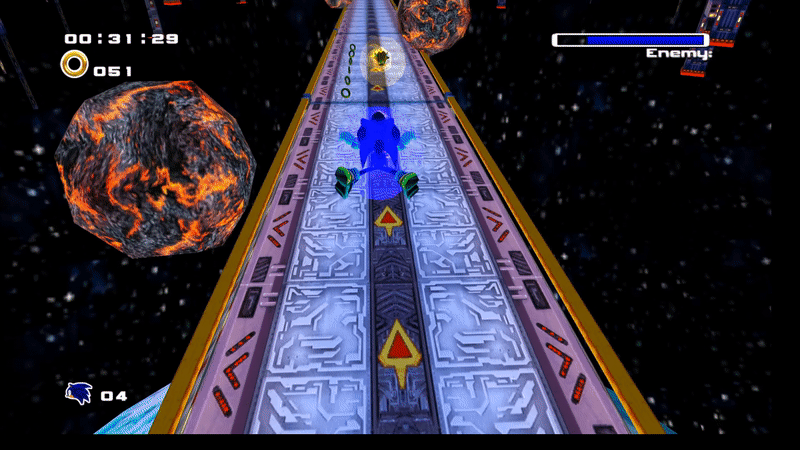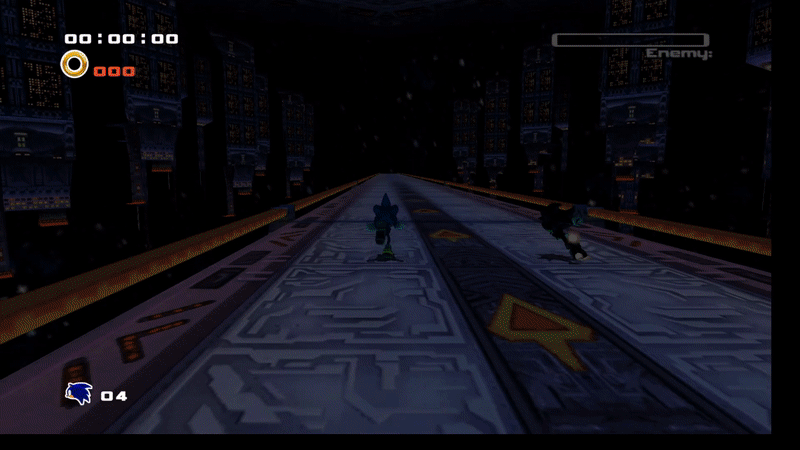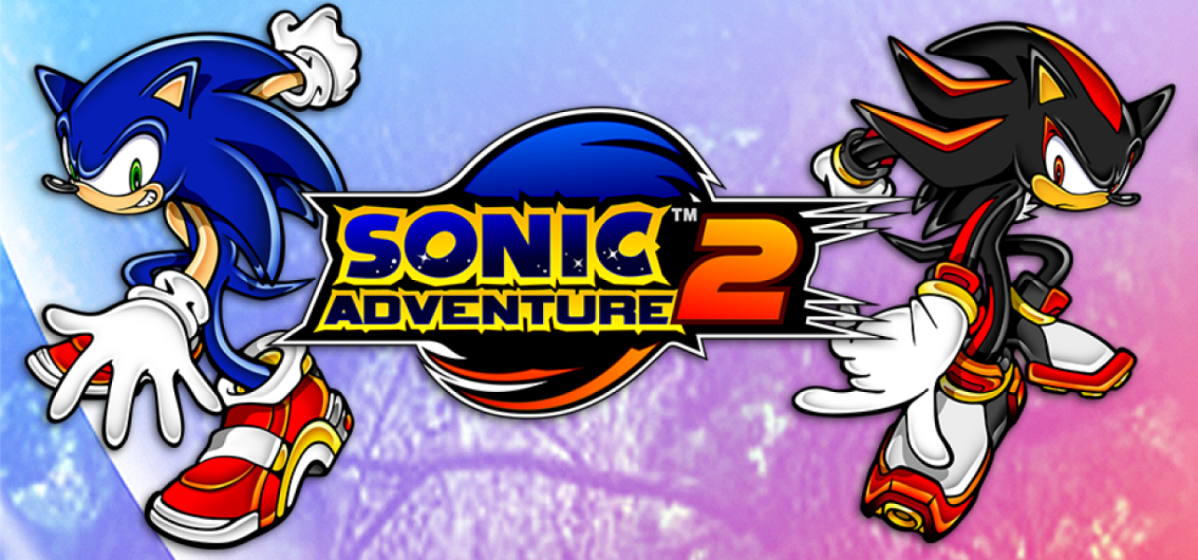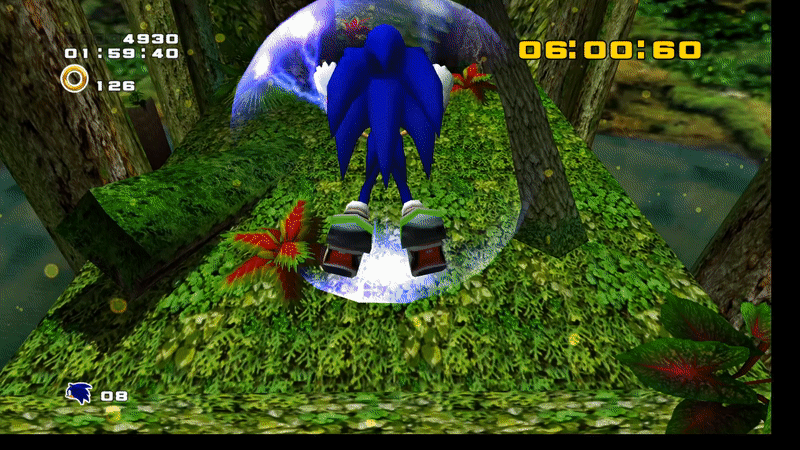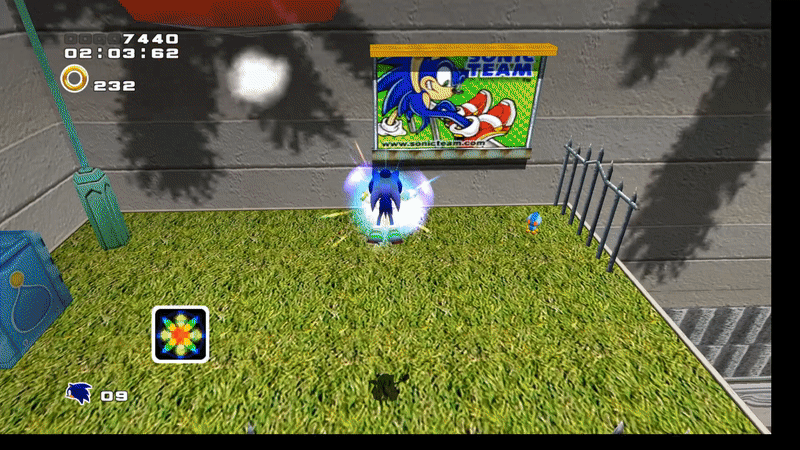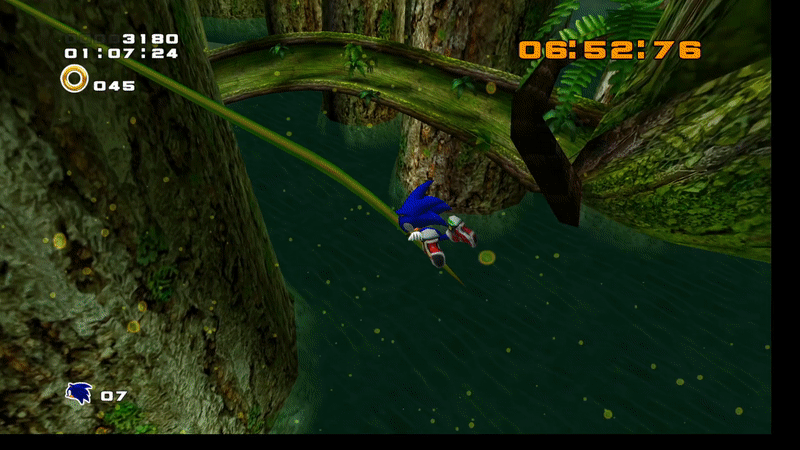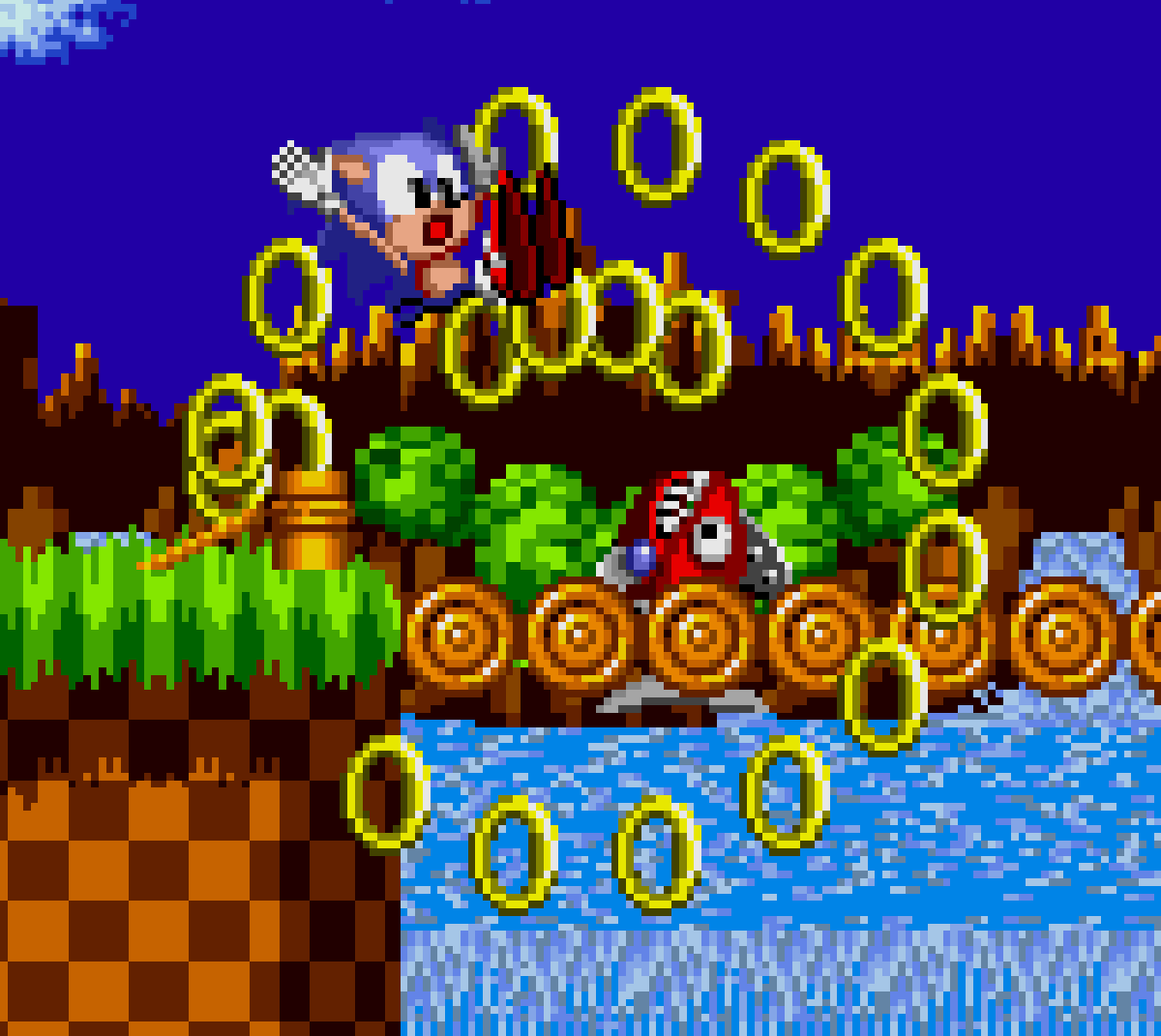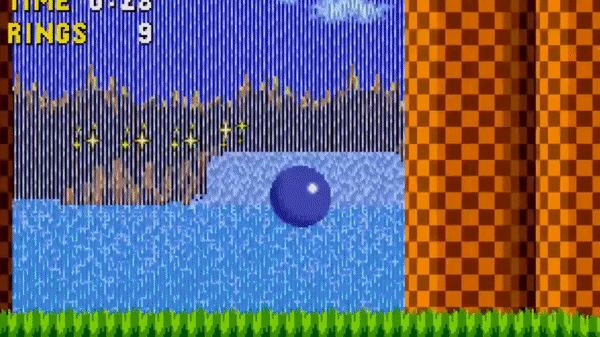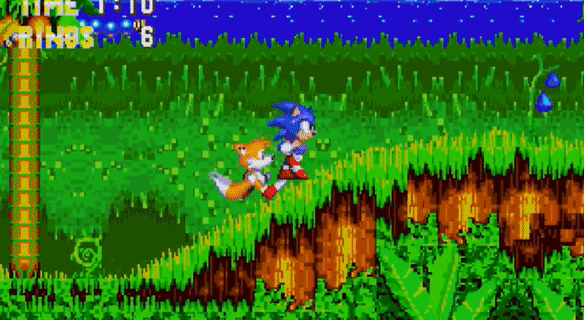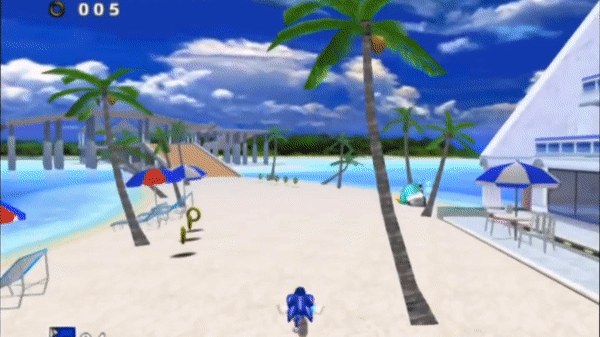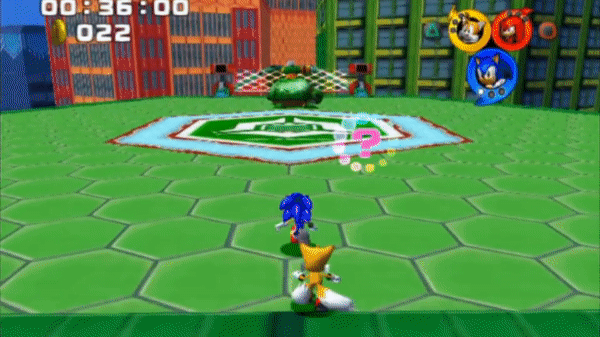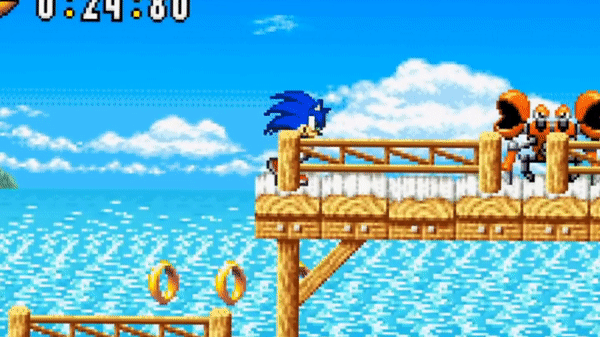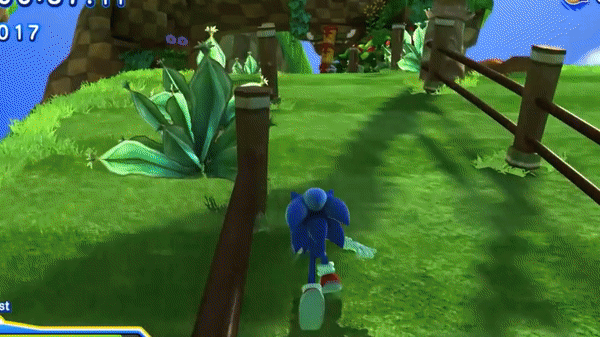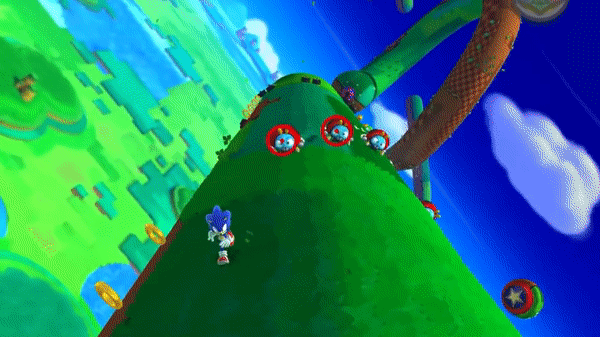So this is not a review blog. Reviewing things is not my usual thing. I’m making an exception for this, a very particular game. My relationship to the Sonic franchise is difficult for me to put words to. It is a property I am so profoundly invested in, I will watch all marketing and critical material for each new entry in this monolithic franchise like a hawk, and yet I can’t always bring myself to participate in new Sonic content. Lots of breath has been spent on the bizarre nature of Sonic as a media franchise, but for my part, the simple version is as follows. Sonic The Hedgehog is a franchise with identities as numerous as the stars. It is many things to many people, as it’s consistently accrued new young fans over the years with movies, comics, TV shows, and even games that are each often wildly different in tone, texture, and creative vision. Sonic seems to constantly be in a state of wanting to reinvent itself, and I’ve long been wary of this leading to games that are sometimes of questionable quality, and thus an a deep interest in critical and fan reception, despite my own desperate love of the franchise. I’ve just been disappointed by Sonic a number of times, but I desperately want to love each new game.
I’m pleased to say, Sonic Frontiers was not a disappointment to me. I love much about it, but I can’t say it’s exactly exemplary. Well, that’s for the conclusion. Like I said I don’t normally write reviews, but I don’t really care for letter or number grades on media. Art is just so much more than that could ever convey. So, I’m going to do my best, to give voice to my thoughts on the latest Sonic game.
Sonic Frontiers is the first ‘Open Zone’ Sonic game. What they mean by this is simply that the game is divided into several open-world style maps, with objectives, collectibles, points of interest, and characters to meet in each. These maps are not connected to one another as they might be in a full open world game, thus the distinction. This isn’t really an issue to me – I find I have a fondness for the unique strengths of linear game design anyway, so this is a bit of the best of both worlds for me. You can explore the zones as you wish up to a point, when the story kicks in, unlocking the next area.
You’ll find you need to collect a bevy of different objects to progress the story and proceed to the next map, by ultimately assembling the seven chaos emeralds to fight a big climactic area boss. In the mean time, these objects can be collected by exploring the many, many, small platforming challenges scattered about each island, by playing through the more robust ‘Cyberspace Stage’ platforming/speed challenges, by talking to NPCs in narrative sequences, or by simply interacting with various objects to find collectibles.
The Movement
The beating heart of any Sonic game, where speed is king, how does the movement system feel? This is something I always get caught up on. It’s also something that nobody can really seem to agree on, including the developers at Sonic Team! Sonic’s movement and gamefeel has changed so many times fans categorize the different systems like its a wildlife taxonomy, and there are categories within categories! To give you an idea of where I’m coming from, I think the best character controller in Sonic is Sonic Adventure 2, and I don’t think the games have felt quite as good since! Either too slippery, or too stiff, or some other oddity always throws me off. And of course the boost games which followed some years after the Adventure games had completely different design goals, and as such the character controllers departed drastically from what I had been attached to.
Before I get into, there is one strange thing. There are movement sliders. They feature the ability to adjust and customize things like turn rate, initial speed, boost acceleration, and even top speed! That’s a little wild to me. This may sound appealing to some, but me, I’m not fond. In a game about movement, like a platformer, the character controls and capabilities need to be fine-tuned to the environment to really excel at showcasing what a movement system is capable of. Design is decision-making, and a truly great movement system has to be deliberated on to a certain level of specificity such that it is as suitable to its place in the game as possible – you know, you need to design it. To me this is not of the same substance as, say, camera control options. It’s not even really a set of control options. It’s doesn’t affect the interface, it affects what Sonic is literally capable of as a game-entity. It’s strange. It strikes me as a lack of confidence, to have left your game’s de-bugging variable sliders in the options menu. Thankfully, there was at least some confidence here – the default ‘high speed’ style gives you, in my opinion, the optimal experience by default.
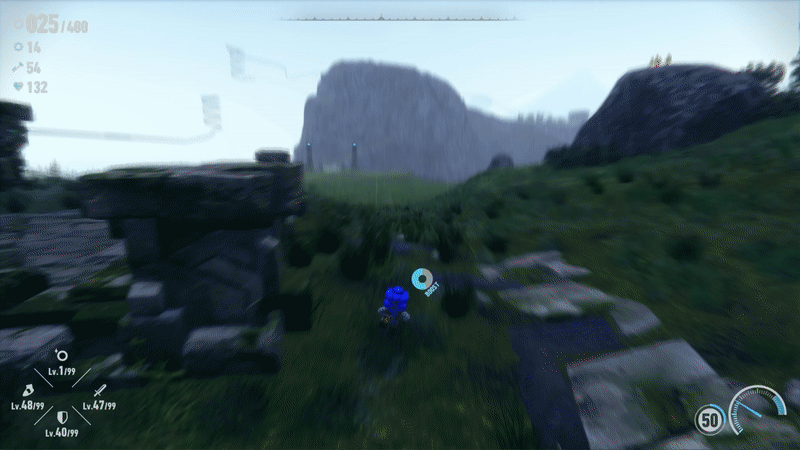

The game opens with a prompt to choose your preferred control style – ‘High Speed’ style or ‘Action’ style, with the game noting that ‘Action’ is good for beginners. As far as I can tell, all this does is change where the default of the ‘top speed’ slider rests. All the other sliders remain the same! Action, uh, sets your top speed to the minimum setting. That’s all! High speed does the opposite, starting it at the max setting. I highly highly recommend choosing high speed, even for beginners. Maybe I’m off base here and as a long-time pro gamer sonic master, but I feel as though even someone relatively new to games is going to pick up a Sonic game… expecting to go fast? It’s kind of the main pitch of the character. I don’t really understand the inclination to undermine that for the sake of making the game allegedly easier. Although one would think nerfing the movement speed could also make the game harder. I just feel as though there were better ways to construct a ‘beginner-friendly’ mode.
Okay on to the actual movement. Sonic controls excellently, smoothly, without hitch. Sonic responsively turns nearly one-to-one with control stick input. He can very quickly achieve impressive speeds, while ducking and weaving around obstacles with an engrossing gracefulness. Sonic never slips and slides around, stopping pretty promptly when bid to stop. Sonic is very adaptable, capable of transferring from one activity to the next in short order, like hopping on a grind rail, hopping off midway to bounce off a balloon, then boost toward a cliff side in the distance. The fantasy of seeing a large landscape ahead of sonic and just dashing off into the distance is realized here, with a responsive and blazingly fast hedgehog.
He feels like Adventure Sonic to me. Which is to say I feel in direct control of Sonic. I don’t feel like I’m guiding him with a carrot on a stick, or wrestling against strict movement constraints. When I want Sonic to get to a particular spot, I can get him there, when I want to running around enemies with flourish and style, I can do that. This movement system really accels to me in its ability to directly translate the player’s self-expression through play onto the canvas of the game. The friction between player and Sonic is very low.

Sonic grips the ground satisfyingly as you run. The homing attack is long-ranged and fast, although I feel it has a bit too much hit-pause, making it more disruptive to flow than it should be. Sonic has more options than ever, being able to slide, bounce, dash to the ground from the air, boost, and double jump! The latter really helps with making precision platform jumps, even at high speed.
To get into the specifics, Sonic’s boost ability has been given an overhaul. It is now a regenerating resource, rather that a purely expendable one, more in line with the stamina meter in The Legend of Zelda: Breath of The Wild. I’m in favor of this change, as it makes the boost more of a strategic tool, a decision to make, rather than just a binary state of ‘holding boost down indefinitely’ and ‘not having enough boost power and walking awkwardly slow’. The boost can also be used as an air-dash to reach distant areas, which is great, because the game does not carry Sonic’s momentum much at all in midair.
It’s something you get used to, but it feels awkwardly wrong to jump out of a full sprint only to watch all of your speed evaporate. Obviously, the maps and levels are not built to accommodate a movement system that heavily transfers speed from one state to another. Every time you light-dash, homing-attack, or bounce, Sonic’s speed is totally reset, and you have to rely on the boost to pick it up again. Luckily, the boost is no longer a one-size-fits-all solution to every obstacle. It doesn’t damage enemies, for one thing, so it is possible to send oneself careening into danger at high speeds. This is the fun part though! Sonic has always been all about know when and how to leverage your speed, and Frontiers captures this through the versatility, though not omnipotence, of the boost function.
The new boost, like the old, effectively replaces Sonic’s spindash move, something I still sorely miss. I really feel as though it would fit quite well in Frontiers especially, given how much its movement seems to be inspired by the Adventure games which featured the spindash prominently. Its advantage over the boost is fine aiming, although there’s no reason the two mechanics could not coexist. Indeed, this is proven by the baffling inclusion of the dropdash, inspired by Sonic Mania. Sonic can spin up, but only in midair, and otherwise it functions exactly like a spindash, perhaps a bit more unwieldy than the one in Adventure and Adventure 2. You can’t use it for fine aiming since you need to jump into it, but the dropdash feels great to use once you get the hang of it, and although it’s by no means necessary to use in the game, it’s cool to have- and I feel the same about Sonic’s most iconic move! Please bring back the spindash. Anyway. The spindash feels like a glaring omission, if only for the sake of completeness, but most of its functionality has been distributed to other moves.
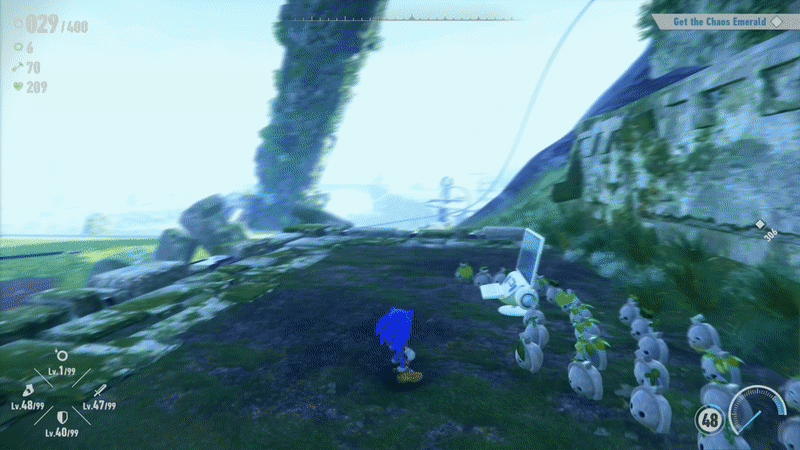
Sonic plays mostly the same in the Cyberspace Stages, except his turn rate is more strictly throttled, as the stages are more racetrack-like. Interestingly, it seems as though the movement sliders don’t affect Sonic in these stages, at all. It seems there was confidence in how he moved in this context. And well-earned too! I honestly think Sonic handles better in Cyberspace than in any other ‘boost’ game that came before. Sonic still feels like a person, rather than a runaway car. Stopping, turning, readjusting for fine precision, is all intuitive and not a roadblock to some of the more platform-heavy stages. I do have one quibble, which is that Sonic has far less air control than in the Frontiers overworld, even while stationary. This is not ultimately very important to the core gameplay of Cyberspace, which wants you to go fast. The lack of air control while jumping at high speed is meant to be evocative of momentum, ironically, since the game doesn’t really express momentum in many other ways, and that makes sense. At low speed it doesn’t really make sense and feels awkward. It wasn’t a common issue for me, but occasionally, whether I wanted to look in every nook and cranny of a level, or was backtracking to grab a missed collectible, sometimes I’d miss a platform entirely because Sonic can barely move in the air in these stages.
Although this game lacks momentum, the way one can string Sonic’s various moves together to achieve a similar effect can be very satisfying. You might backflip off of a grindrail to air-boost right across an enemy that would’ve slowed you down, and you get through the level a couple seconds faster. It’s amazing how well the systems can interact like this in subtle ways, and leaves a lot of essential room for mastery. Though I wish there was some measure of greater momentum, which would go a long way had the levels also been designed to accommodate it, I still think this is going to be a very repayable game. It’s one of the most immediate, smooth, and frankly playable Sonic movement systems we’ve had in a long time. I’d love to replay all of the old Sonic boost stages with this new movement system.
The Combat
It’s fluff. It’s style over substance that involves a lot of stopping and starting that feels quite at odds with the otherwise very free-flowing and fluid movement gameplay. Eh. I’m not happy to say that. I didn’t want the combat to bounce off of me. I don’t think an added focus on combat is totally incompatible to a Sonic game. I just think to make it work, the systems would’ve had to better play to its strengths. What we got, feels oddly disconnected from the movement systems whereas I had hoped for a pair of systems that interlinked in some way. What we got is rife with simplistic dominant strategies, and an apparent lack of depth. Suffice to say, for a Sonic combat system, I’d hope for an intricate dance of momentum, all about constant movement, situational awareness, and yeah, speed. This is not that.
I want to be clear; the combat is not a chore. It’s not egregious, or irritating, or even too frequent. It mostly just confuses me as to why it had to be there. It’s never challenging nor interesting to me in the way that combat depth usually is. Its best qualities are the spectacle, which seems to be the primary motivator behind the design of this combat. It is indeed very,, cool,, when Sonic kicks the air so hard it shoots laser crescents at his enemies. It is very,, neat,, when Sonic zigs and zags around in a finishing flourish to dispatch an enemy. It’s pleasant enough to watch enemy robots explode, and the combat never lingers long enough to feel like too much of a disruption.
Sonic’s combat options essentially include your standard series of punches chained together, and, in the style of other genres like fighting games and beat-em-ups, the option to string in alternate button inputs in the middle or end of a combo to extend the assault an deal more damage. The wrinkle is that Sonic can chain his homing attack into the beginning of one of these combos. The homing attack is ubiquitous in 3D Sonic and allows the hedgehog to zoom to a nearby enemy’s location whilst damaging it. It’s snappy, smart, and fits in perfectly with a game all about moving. Now though, with enemies gaining larger health pools to accommodate a larger-scoped combat system, Sonic can’t just zip by his defeated foes anymore. There’s a lot of stopping, wailing on a guy with lots of health, rinse and repeat. I found myself just bypassing a lot of enemies actually, because I always felt like that’s what I wanted to be doing as Sonic. The prospect of taking two minutes to button mash some randos to death never appealed to me here. Credit where it’s due though, the decision to change the homing attack from an air-only maneuver to one Sonic can perform from any state, including running on the ground, assigned to the same button as his punchy combo attack, was pretty clever. It essentially means Sonic will always zoom to an appropriate target when starting a combo. I just wish the act of building those combos was more fun.
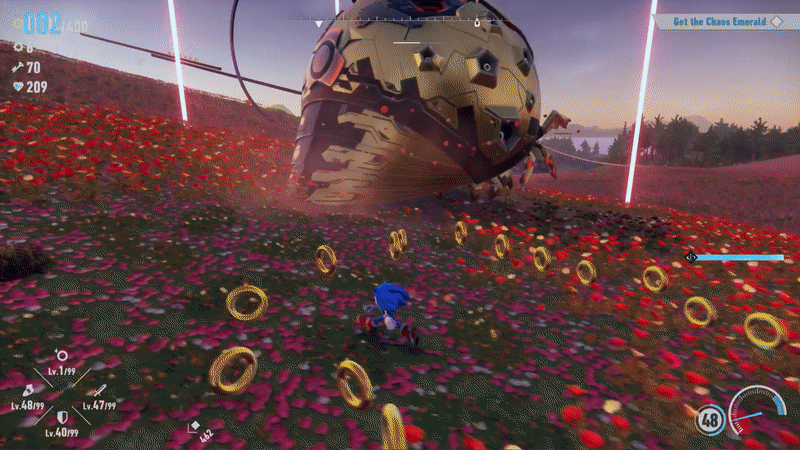
Enemies caught in one of your combos will be mostly stunned until you finish. Other enemies can intervene, but all the AI in the game seems placid enough that I never really found it too much of a problem. Really I found Sonic’s defensive options- a dodge and a parry – nearly unnecessary. I say parry, but it’s more like a block with a reprisal attack. There’s no timing window. By holding the block input, Sonic stops in place (ugh), and prepares for an enemy’s blow. Once he takes the hit, the offender is stunned, and Sonic can follow up with his own attack. To block another hit, you must re-input the block, but after that it can be once again held indefinitely. It’s a little wild to me, that this system gives me no sense of speed, seeing as I’m playing as Sonic The Hedgehog. The parry and it’s stationary, time-agnostic nature is a prime example.
Not that you’ll need to be very defensive to begin with. As is expected by this point, Sonic’s life meter is his ring count. Rings being the common collectible in this game, the equivalent of coins. When you get hit, you drop some. If you’re hit with zero rings, you die. Same problems as always apply. There’s not much tension if I know I can always just pick up the rings I dropped, except in very specific situations. This knowledge makes a savvy player basically invincible, and draws into question the necessity of Sonic’s upgradeable defense level, which only reduces how many rings vanish from Sonic’s inventory when hit, as opposed to how many hit the ground. No matter your defense level some always do drop, and you can just pick them up.
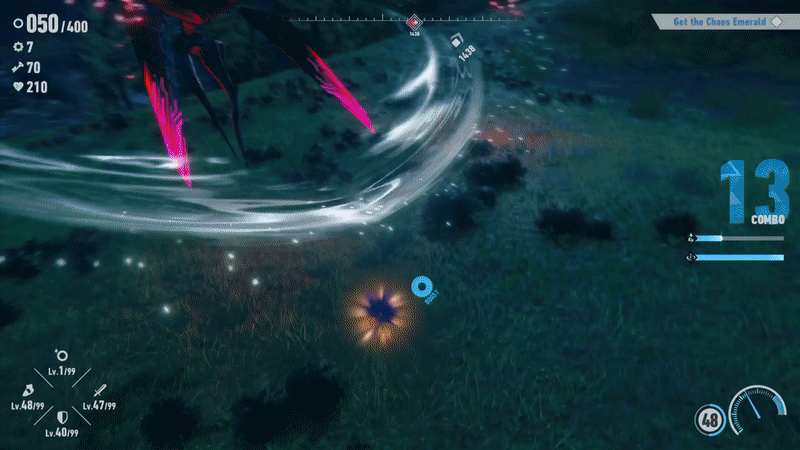
Sonic has a good amount of brilliant blue eye-popping moves to use, and it’s all very impressive looking, but for me, to feel invested in a game’s combat I have to feel present in the shoes of the player character. I have to feel like I’m making decisions as though there are enemies attacking me. I think the primary problem here is that I don’t feel any of that. I feel like watching some pretty nice, but altogether non-interactive animations. Even then, some of the camera choices are pretty questionable. One camera animation in particular, during one of Sonic’s moves, I could easily see giving someone motion sickness. The whole framing feels off, too. Often you’ll see a reverse shot of Sonic, as if your perspective is meant to be from the target of the attack. But that is so incongruent. I’m meant to be playing Sonic, shouldn’t the camera frame me as Sonic, not a third-party observer?
The combo system seems to be catered specifically to stringing together Sonic’s various new tricks to maximize damage in one combo, with very little emphasis on ducking and dodging enemies, which are, in the majority, woefully unequipped to pose a threat to Sonic. Though I always enjoyed the nice crunchy audio-visual feedback of smashing robots, that was all underlined by my misgivings. I rarely found myself making interesting decisions when dispatching enemies. With the exception of one new mechanic.
I did mention that the combat mechanics and movement mechanics do not interlink in a way I find satisfactory. Well, that’s mostly true. Besides Sonic’s punches and kicks and dodges, there’s also the new cyloop. The cyloop is allows Sonic to leave behind a trail of energy as the player holds the cyloop button. If the player navigates Sonic into drawing a closed shape with this energy trail, he whips up a damaging whirlwind to lift and harm foes. This is fantastic. This is a combat mechanic, which is also a movement mechanic. This synergizes with what Sonic is about, and this tiny little thing has such great room for mastery and interactivity. You can run Sonic as fast or as erratically as you please while doing it – you can even combine the cyloop with Sonic’s new boost, for some insanely agile and stylish loops.
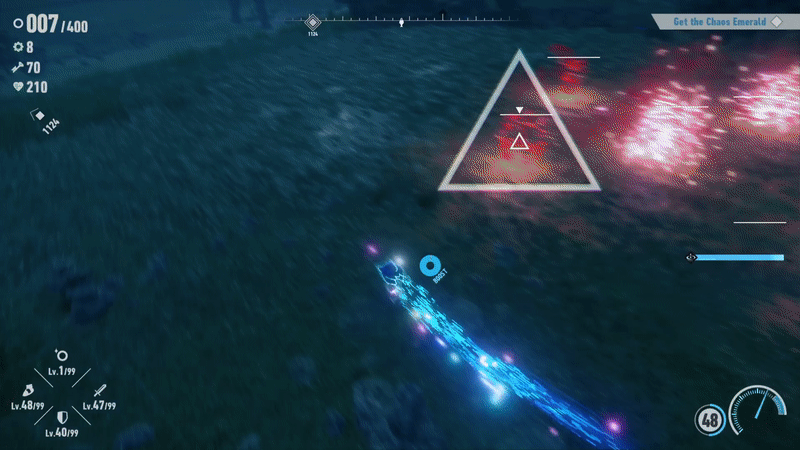
One maneuver, that never got old for me was rounding up groups of enemies as they spawned. The most basic enemies usually teleport in, in groups of three or four. If you’re quick, Sonic can boost into a full sprint, cyloop around them, launching the enemies into the air, where they are helpless to stop Sonic from using his homing attacking to blast through each of them in turn. It’s great, and feels like a real execution of skill and strategy – it requires an understanding of how two disparate mechanics (cyloop and homing attack) interact, as well as the execution of a cyloop at a high, unwieldy speed. As enemies got stronger, it became apparent that I could no longer defeat them with just a cyloop and a single homing attack. It was kind of disappointment, to be honest, to use the rest of Sonic’s sluggish arsenal. Having to repeatedly wail on a robot to defeat it feels so much less smooth and flowing than a one-two punch of cyloop to homing attack. The enemies still rarely put up any opposition to me doing this, which I would’ve liked to see, but I enjoyed the cyloop so much more than every one of Sonic’s other offensive options that I’d use it whenever I could. This is a mechanic I hope to see return in the future, and expanded on.
Honestly, even the bosses I feel could’ve been designed largely the same way just without the combo system at all. All of them boil down to -do some Sonic related activity like run fast or jump over something, until my weakpoint is exposed, then wail on it-. Why the wailing though? Why not just expose the weakpoint and hit it, then we get on with doing Sonic related things. The following would work basically the same without a combos system. Run up his arm, sure, avoid the red rings, got it, then just homing attack the weakpoint. Why stop in place for all the extra punching?
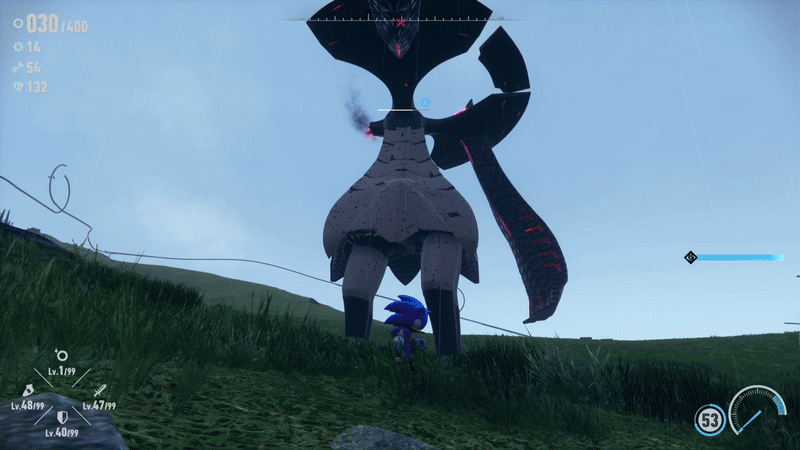
For all of my complaining I want to reemphasize that the combat is a minor enough part of regular gameplay, or otherwise inoffensive enough, that I never felt like it was really disrupting my good time. It helps that so many of the encounters are so easy. I obviously care a lot about combat design, and I tend to have a lot more to say about a subject when I do really like it, the subject being Frontiers in this case, but it has just a few niggling problems that I can’t quite ignore. So if you’re wondering how I went on at such length about a supposedly ‘not that bad’ subject, that’s how.
The Levels and Spaces
One of the collectibles Sonic needs to complete the game are obtained by doing Cyberspace levels, which are bite-sized chunks of intense gameplay reminiscent of “boost” games like Sonic Generations and Sonic Forces. In these stages, Sonic’s movement is more restricted, and there’s a focus on completing them fast. In fact, there are several objectives in each, and you receive more of the required collectible the more challenges you complete. One such challenge is to beat the level in a minimum required time.
Most of these times are pretty generous, but some of them really push the movement system to its limit, demanding the player squeeze every last second they can out of Sonic’s ability to cut corners, boost over obstacles, and bounce off baddies. It’s really quite exciting, and the smaller levels had me a lot more invested in trying to get good times than more open-concept levels in past Sonic games might have. I still miss Sonic Adventure style stages, but the refocus on speed running is a good fit for these narrower experiences.
The Cyberspace levels lack the spectacle and narrative context of boost games from previous games, using only a short list of visual elements, recycled across many stages likely for the sake of development scope. That aside, this may be the most I’ve enjoyed boost-style long-corridor Sonic levels in a long time. With the updates to Sonic’s movement, I find them a lot more approachable, and my playstyle a lot more freeform.
The reduction of level themes to a rather sparse and measly handful certainly there’s a lot less visual variety than I might be used to in a Sonic game. For what it’s worth, I can’t honestly say that I got tired of the repeated patterns by the end of the game, as the levels themselves are engrossing enough as bits of challenge and play. They’re pretty sizeable, too. They’re not primarily what you’ll be doing in the game, but nor are they purely optional side-content. You do indeed have to play at least some of them, but they are fun, and I found it pretty breezy to complete every single one. The levels are fun to play, but that’s all. I will never have the same sort of visceral, emotional connection, or immersive sense of place to these nearly context-free spaces as I do to some of Sonic‘s classic locations. Speak of which…
For many of these cyberspace levels, the physical platform layout, obstacle placements, and overall design is borrowed largely or in-part from existing Sonic levels from previous games in the franchise. While this may seem off-putting to some, it’s actually kind of refreshing, to retread familiar ground with Sonic Frontiers‘ new and frankly quite competently put together movement system. Some of these stages haven’t been in the spotlight for literal decades. While you do need to do at least some minimum number of cyberspace stages, you do not need to do even nearly all of them, so the presence of reused content doesn’t feel like much of an imposition to me. Their presence is largely explained away by cyberspace being ‘constructed of Sonic’s memories’ or somesuch, even though certain stages that are present such as Radical Highway are not levels that Sonic himself ever ran through. It’s neither here nor there.
Ultimately, a curated list of tried and proven stage designs alongside a handful of originals and remixes makes the Cyberspace level design quality feel quite consistent overall. The stages also being bite-sized allows the designers to explore gimmicks for the levels that might be tiresome otherwise, like a series of suspended boost rings you have to jump between, for example.
When it comes to the overworld, we have a repeating pattern of context-free grind rails, bounce pads, and booster pads littering a mostly naturalistic environment dotted with high-tech ruins. The ‘context’ to these is that they are bits and pieces of these ruins, but they don’t really read as that. Their presence faded into the background for me as I simply began seeing them as gameplay items, though I wish they could be that and a more natural part of the world. The open zones themselves to me feel pretty uninspired. Grass place, volcano place, desert place, etc. I’ll remember the Starfall Islands well for a number of reasons- the events that took place here, the fun I had running around with Sonic, the conversations I had with his friends – but I won’t remember them because of my sense of place while visiting them. They feel honestly, kind of generic.
The Music
I probably don’t need to tell you this, but Sonic Frontiers‘ soundtrack is out of control. It’s bursting with levels of palpable passion and energy such to be bordering on unreasonable. The way I feel when listening to some of these songs is how I should be expecting to feel listening to a sold-out rock concert in a stadium. To experience the same sitting in my living room playing a video game for children about a cartoon hedgehog feels almost surreal, but this has always been the case. The consummate strangeness of this franchise is a feature, not a bug. You can’t quite replicate this exact experience elsewhere. This is the kind of energy that got me invested in the hedgehog in the first place.
The high-energy stuff is kept close to the chest, for a bit though. The overworld is rather ambient, chill music just capturing the vibes of nature. It seemed in marketing to me like it would be an ill-fit for sonic, but the overworld really is more about vibes than action and adventure. The heart-pumping electronic stuff starts to kick in with the Cyberspace levels, which utilizes some short-looping but very catchy and cool tracks.
It’s pretty much tradition at this point, Sonic’s got good music. No matter what you think of any given Sonic game, there is a weird, infectious bug at Sega that convinces each and every person on their audio staff that they need to compose and perform music like they’re going to die tomorrow. The energy flows, and every Sonic soundtrack inexplicably has a song powerful enough to crack a mountain in half. Lesser game soundtracks would settle for a profoundly powerful endgame boss theme that rolls with a thunderous buildup of swelling instrumentals before awashing you in a tidal wave of heartfelt lyrics which tie together the themes and the game and steps along the way the characters had to complete this journey together with you. Sonic Frontiers has at least four. Four lavishly produced lyrical tracks that put most of what I hear in other games to shame. The Metal Gear Rising: Reveangence comparison early was foreshadowing. There was clearly some inspiration here, these songs kick ass, and in similar fashion, blast you in the face with some of the most earnest lyricism you’ve heard since you first discovered what music was when you turned fourteen, just as each boss enters their climactic final stage. Blaring guitars accompany dual vocalists utterly convinced they’re creating the coolest thing of all time – and they’re right. I feel like I could crack a mountain in half with my fist listening to these.
Weird side-note: The main credits theme for this song, Vandalize, which is also very good, has an original edit not featured in the game. This original edit pretty heavily features the F**K word, in the context of its traditionally 1st definition. Kind of funny, having that officially closely associated with a Sonic The Hedgehog game. Y’know I’m not a prude for that sort of stuff, not at all. Just crossed my mind that actual children will probably be googling this song once they finish the game. It’s nothing that’s gonna ruin anybody’s life or anything, just. Funny? Strange? I dunno. Side-noteworthy, I guess.
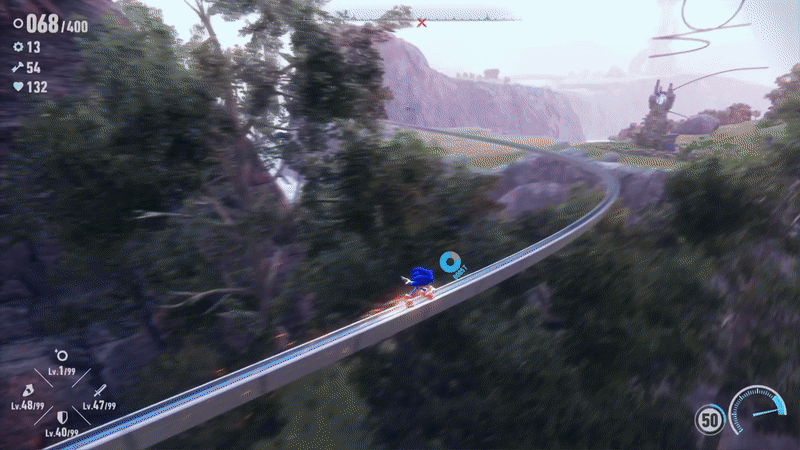
The Narrative
Sonic fans made a big deal about the new head writer for this game, Ian Flynn. He’s been heading up the new run of Sonic comics lately, and apparently is much beloved for that. I don’t read the comics, and video games are a very different medium, even aside from the fact that game development is often messy and solid writing can get mangled for any number of unforeseen reasons. I was cautious going into the story of Frontiers.
Narrative for Sonic has been as divisive and chaotic as his gameplay, for much the same reasons. Seems like no one can decide what Sonic really should be, or if he should even be anything. Maybe Sonic can occupy any tone or style at any time. Who’s to say? Before Frontiers Sonic’s games have given up on much of the melodrama and outlandish plotlines that defined him for some years, focusing more on child-skewing comedy and such silliness.
Frontiers sticks more to the old dramatic model. Sonic’s friends are in real trouble, trapped in Cyberspace, and he’s got to rescue them. A new antagonistic force in the form of the mysterious AI-hologram girl Sage has appeared. I have to say, the plot of this one is rather thin. It feels as though Flynn was brought on quite a ways into development, to post-hoc fill out the narrative beats to fit in with Sonic’s adventure across a series of islands. Not much happens other than Sonic getting beat up by big monsters repeatedly as he slowly gets closer to his friends’ release. Then you fight a bigger monster at the end.
That said… though the plot didn’t do much for me, there’s a lot more dialogue and character writing going on here than Sonic has had in a long time. You know, there’s like, some real growth and personal introspection on the part of these cartoons between some of their conversations. It seems Ian Flynn has a real talent for character voice, as Sonic, Knuckles, Tails, and Amy haven’t felt so much like fully fleshed out characters for a long, long time. They have opinions of each other, senses of humor, dreams, and desires. They aren’t caricatures. Where the plot feels thin, the story is consistently carried by these character interactions, and I constantly felt compelled to find the next story cutscene, because I just wanted to see these bozos interact with each other more. There’s a lot of one-on-one dialogues between Sonic and one other character, and I would’ve liked to see more group interactions, or interactions sans Sonic, and perhaps a more robust plot would have been able to accomodate that.
Another highlight is the subplot of series archenemy Dr. Eggman, which happens mostly off-screen, but is recorded in a series of obtainable voice recordings from him. Eggman as an example here, we really see some new takes on these characters, sides that logically work, but have never really been explored before. How does Eggman feel about the, like, by all accounts, actually alive machines that he’s created with his own hands? Maybe Tails, though he values Sonic as a best friend, has feelings a bit more complicated than that. What does Amy think of Sonic, having chased his affections for so long, but been rebuffed at every turn? There’s a lot here.
That’s to say nothing of the new character, Sage. She’s adorable, entertaining, and even packs a bit of a pathos punch. I wouldn’t say she’s terribly deep, or anything, but she’s obviously got some emotional complexity to her, and her relationships to the other characters are super interesting. Her visual design is really cool too. I really, really, hope we get to see more of her in the future.
Another fun quirk of the writing is that is seems almost religiously committed to reaffirming the canon of Sonic The Hedgehog as a series. Nearly every game is referenced in some way, its story being incorporated into Sonic’s personal history, no matter how absurd or bizarre the events would seem to be in retrospect. I honestly have to respect the hustle. For a long-time fan like me, I found it amusing, and even somewhat compelling, the persistent callbacks and connections.
The storytelling technique and presentation, as far as games go, is nothing you haven’t seen, for the most part. You go from game objective to game objective and occasionally trigger a cutscene conversation between Sonic and an NPC. As I’ve mentioned, it did keep me continuously motivated to find the next one though, it’s certainly not bad! In terms of presentation, when the game wants to build excitement, it delivers, with that insane music and some absolutely gorgeously boarded animated action scenes.
The plot, like it begins, ends somewhat underwritten, with a dearth of real context or answers for what’s happening. There are bits and pieces that suggest a grander narrative that may follow, but I could see this leaving people cold in some respects. And yes, I got the real ending. Still, the character writing remains strong-throughout and I’d be excited to see what this new writing team can do with perhaps more leeway.
Conclusion
Sonic The Hedgehog once felt like every creative involved through they were creating the coolest thing in the goddamn world. For a long time I didn’t quite feel that anymore. Maybe it was a sign of growing up, or maybe something was lost. It’s hard to say. From the music, to the visuals, the ambition and scope of the story, the style you’re capable of in gameplay. It was all just so cool. And you know what? Sonic Frontiers is far from a perfect game, it’s full of baffling decisions and strange inconsistencies that feel as though someone should’ve been on top of, stuff that feels obvious to me in hindsight. And yet, I feel shades of that same feeling again for the first time in maybe a decade. Sonic is cool. Sonic has always been cool but this is different. This is like, advanced cool. This feels like every creative involved is convinced that they are creating the coolest thing in the goddamn world. The passion is palpable. And it’s fun! I breezed through the game 100% with basically no desire to stop. The gameplay may not have as much ‘momentum’ as I hoped, but there’s momentum in the energy of this game. Like it’s the first step of a mountainous surge of creativity. Sonic Frontiers is good. Go play it.
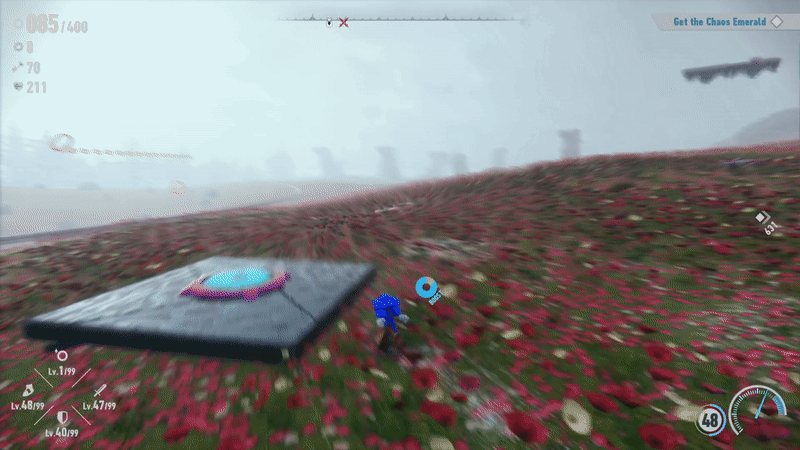
They’ll Know Your Name, Burned Into Their Memory…
